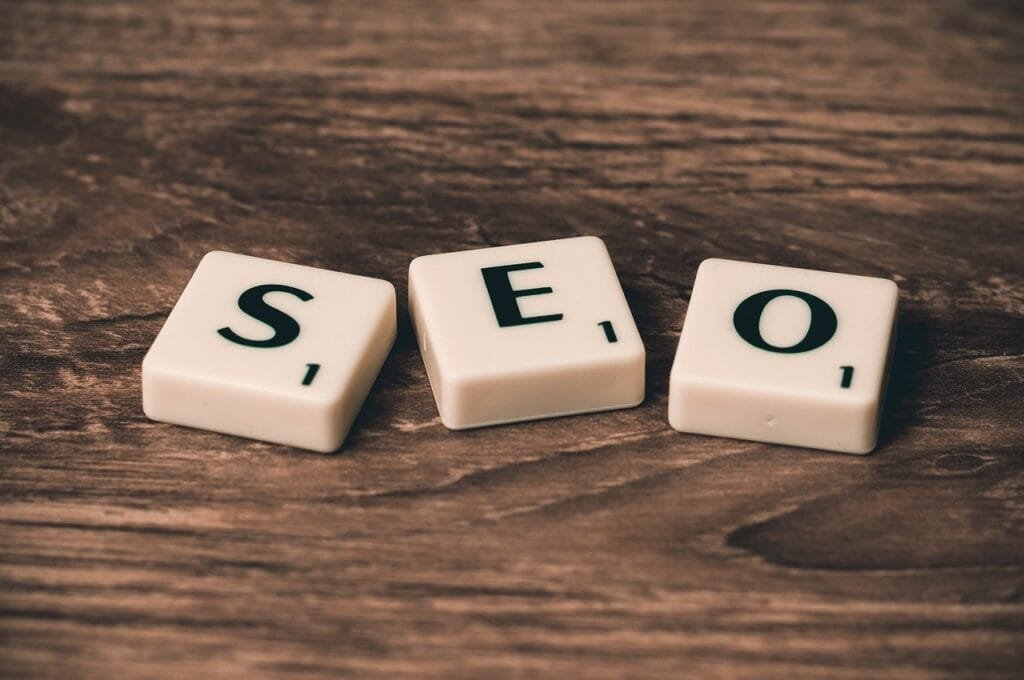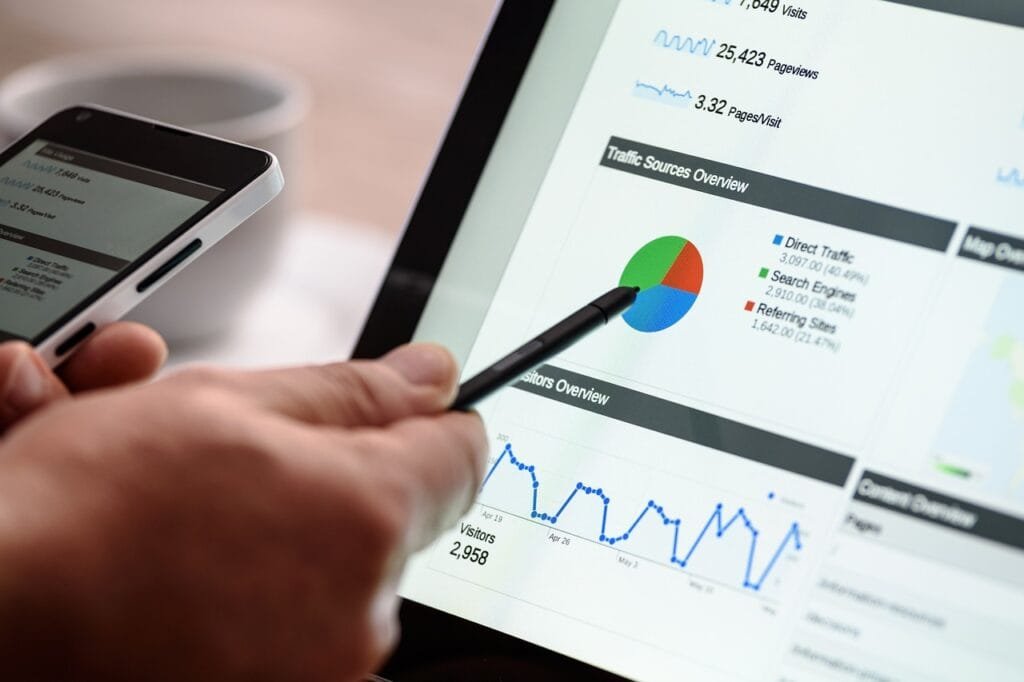This Article has been revised, edited and added to, by Poulomi Chakraborty.
- From Billboards to Social Media: A Shift in Engagement
- The Rise of SEO and Content Marketing: Tailoring to the Digital Consumer
- Revolutionizing Advertising: From Display Ads to Programmatic Buying
- The Future of Digital Marketing: The Impact of AI and Machine Learning
- Augmented Reality and Virtual Reality in Digital Marketing
- Navigating the New Frontier: Emerging Technologies in Digital Marketing
- The Strategic Role of Data Analytics in Digital Marketing
- Conclusion
The landscape of digital marketing has undergone a tremendous transformation, evolving from the static allure of billboards to the dynamic and interactive world of bots. This evolution has not just changed the tools and platforms marketers use, but also the very way we understand consumer behavior and engagement. In this exploration, we dive deep into how these changes have reshaped the marketing strategies of today and what it means for businesses looking to connect with their audience effectively.
From Billboards to Social Media: A Shift in Engagement

The Era of Billboards
Decades ago, billboards were one of the most sought-after advertising mediums. Placed on high traffic routes, they offered mass exposure, showcasing brands in larger-than-life formats. The strategy was straightforward—create eye-catching, memorable ads that commuters would see as they passed by. The interaction was one-way, with no direct method to measure the immediate impact of these advertisements on consumer behavior. The main goal was brand awareness, broad and untargeted.
Transition to Social Media
As the digital age took root, the shift from traditional billboards to social media platforms marked a significant evolution in marketing tactics. Social media offered something fundamentally different—interaction. Platforms like Facebook, Instagram, and Twitter didn’t just allow brands to display their message but also enabled them to engage directly with their audience. This two-way interaction became a game changer.
Analyzing the Impact
Audience Engagement: Unlike the passive exposure of billboards, social media thrives on active engagement. Users can like, comment, share, and even directly message brands. This interaction is not only more engaging but also provides immediate feedback and data to marketers, allowing them to understand what resonates with their audience.
Targeting Capabilities: Social media platforms come with advanced targeting options, enabling marketers to reach specific demographics, interests, and behaviors. This precision was something billboards could never offer, where the message was broadcast indiscriminately to whoever happened to pass by.
Cost-Effectiveness: Deploying a billboard involves significant costs, including rental and production. In contrast, social media can be a more cost-effective solution with options for any budget, from organic posts to paid advertisements. Additionally, the ability to scale up or down instantaneously provides marketers with flexibility in budget management and campaign testing.
Measurability and Analytics: One of the most significant advantages of social media over billboards is the ability to measure performance through detailed analytics. Social media platforms provide insights into how many people viewed, interacted with, and reacted to your content, complete with demographic breakdowns. This data-driven approach allows for refined strategies and better ROI measurement.
The transition from billboards to social media reflects a broader trend in digital marketing: moving from static advertising methods to dynamic, interactive, and data-driven strategies. It highlights a shift from a focus on mere visibility to engagement, precision targeting, and measurable outcomes. For businesses today, understanding this evolution is crucial not just to keep up with current trends but to anticipate future shifts in digital marketing dynamics.
The Rise of SEO and Content Marketing: Tailoring to the Digital Consumer
The Birth of SEO
Search Engine Optimization (SEO) emerged as a pivotal strategy with the advent of search engines like Google. Initially, marketers aimed to understand and manipulate algorithmic patterns to boost rankings. Early SEO was quite basic, often focusing on keyword stuffing and backlink quantity over quality. This period was marked by tactics that prioritized search engine visibility over user experience.
Evolution of SEO Practices
As search engines evolved, so did their algorithms, which became more sophisticated and began penalizing practices that compromised user experience. Modern SEO is a complex, nuanced discipline that emphasizes relevance, quality, and user engagement. Today’s SEO practices include a balanced mix of technical website optimization, high-quality content creation, and authoritative backlink profiles, all designed to deliver the best possible user experience while satisfying search engine criteria.
The Integration of Content Marketing
Parallel to the evolution of SEO, content marketing began to take shape as a strategy that focuses on creating and distributing valuable, relevant, and consistent content to attract and retain a clearly-defined audience. Unlike traditional marketing, which often interrupts the audience with direct sales pitches, content marketing seeks to solve problems, educate, and entertain, thereby building a relationship with the audience.
Synergy Between SEO and Content Marketing
Interdependence: SEO and content marketing have become increasingly interdependent. Effective content is now the backbone of SEO because it influences factors like dwell time (how long visitors stay on a page) and bounce rate, which are critical for SEO rankings. Conversely, SEO tactics guide content creation strategies, ensuring that content is discoverable by target audiences through organic search.
Focus on Value and Engagement: Both SEO and content marketing have shifted away from manipulative tactics to focus on providing value and engagement to users. This is reflected in the creation of detailed, informative, and user-friendly content that addresses specific needs and queries of the audience. This approach not only improves SEO results but also enhances brand loyalty and customer engagement.
Content Formats: The evolution has also seen a diversification in content formats. From blogs and articles, content has expanded to include videos, podcasts, infographics, and interactive media. This variety caters to different preferences of consumption and can be optimized for search engines in various ways, broadening the reach and impact of content marketing efforts.
Measuring Success in SEO and Content Marketing
Unlike traditional metrics, success in SEO and content marketing is often measured by long-term engagement and conversion metrics rather than immediate sales. Analytics tools provide insights into how well content performs in attracting organic traffic, engaging users, and contributing to conversion goals. These metrics help marketers adjust strategies to focus on what works best, ensuring that resources are utilized in the most effective manner.
The growth of SEO and content marketing represents a shift towards more sustainable, user-focused marketing practices. This evolution underscores the importance of understanding and responding to the needs of the digital consumer. For startups and established businesses alike, leveraging these strategies effectively means committing to continuous learning and adaptation to the latest best practices and algorithm updates.
Revolutionizing Advertising: From Display Ads to Programmatic Buying

The Initial Days of Display Advertising
Display advertising started as static banner ads placed on websites, operating much like digital billboards. These ads were simple and generally not targeted, relying on the website’s general traffic to drive impressions. The approach was straightforward: place an ad on a popular webpage and hope for high visibility. However, this method often led to inefficiencies, as ads frequently reached viewers who had little interest in the product or service being advertised.
The Shift to Targeted Advertising
As digital marketing evolved, so did the sophistication of strategies. The introduction of targeted advertising marked a significant shift. This approach used collected data to tailor ads based on user behavior, demographics, and preferences, which increased the relevance of ads to each viewer. Techniques such as cookies allowed advertisers to track user behavior across sites to build detailed user profiles and deliver highly personalized advertising messages.
Emergence of Programmatic Buying
The next significant advancement in advertising technology was the emergence of programmatic buying. This system uses software to purchase digital advertising, as opposed to traditional processes that involve human negotiation and manual insertion orders. Programmatic buying uses algorithms to analyze which ads to buy and how much to pay for them, all in real time. This technology enables more efficient spending by automating the decision-making process in ad buying, optimizing every dollar spent toward reaching the most relevant audience.
Benefits of Programmatic Buying
Increased Efficiency and Scale: Programmatic technology streamlines the ad buying process, reducing the time and labor associated with manual placements. It also scales the process, allowing advertisers to manage multiple ad exchanges and data exchange platforms simultaneously, maximizing reach and leveraging opportunities across the internet.
Enhanced Targeting Capabilities: With programmatic buying, advertisers can take advantage of real-time data to adjust their campaigns according to how they perform. This can include targeting users based on specific actions they have taken online, such as visiting a particular page or engaging with a previous ad.
Improved ROI: By optimizing in real time for the most effective ad placements and targeting, programmatic buying often delivers a better return on investment than traditional display advertising. Advertisers are able to use their budgets more effectively, focusing on placements that convert and reducing waste on those that do not.
Challenges and Considerations
While programmatic buying offers numerous advantages, it also comes with challenges. Privacy concerns are at the forefront, as this method relies heavily on user data to function effectively. Additionally, the automated nature of programmatic buying can sometimes result in brands appearing on or next to inappropriate content if not properly managed.
The transformation from simple display advertising to sophisticated programmatic buying represents a significant leap in the efficiency and effectiveness of digital advertising.
It highlights a broader trend in digital marketing toward leveraging technology to make smarter decisions, enhance user targeting, and improve the overall impact of advertising efforts. As technology continues to evolve, the key for marketers will be to balance innovation with ethical considerations around consumer privacy and data use.
The Future of Digital Marketing: The Impact of AI and Machine Learning

Introduction to AI in Digital Marketing
Artificial Intelligence (AI) and machine learning have begun to transform digital marketing in profound ways, ushering in an era of innovation that is more personalized, efficient, and data-driven. These technologies are not just enhancements but foundational changes that are reshaping strategies across the digital marketing landscape.
Personalization at Scale
One of the most significant impacts of AI in digital marketing is the ability to achieve personalization at a scale previously unimaginable. AI systems analyze vast amounts of data—user behavior, purchase history, search queries, and social interactions—to tailor marketing messages and product recommendations to individual users. This level of personalization improves user engagement and satisfaction, driving conversions and brand loyalty. For example, e-commerce platforms now use AI to show shoppers items they’re more likely to buy based on their past behavior, significantly increasing the chance of purchase.
Automating Customer Interactions
AI is also revolutionizing customer service and support through the use of chatbots and virtual assistants. These AI-driven tools can handle a wide range of customer service tasks, from answering frequently asked questions to resolving complex issues and processing orders. They are available 24/7, providing immediate responses to customer inquiries, which enhances the customer experience and frees human employees to handle more sophisticated problems. This automation not only reduces operational costs but also speeds up response times and improves customer satisfaction.
Optimizing Marketing Campaigns
Machine learning algorithms are excellent at finding patterns in data that humans might miss. In digital marketing, this capability is harnessed to optimize marketing campaigns in real time. AI analyzes the performance of different campaign elements, such as email open rates, ad click-through rates, and social media engagement. Based on this analysis, it can automatically adjust campaigns to focus on the strategies that work best, eliminate underperforming content, and redistribute budgets to the most effective channels. This dynamic approach ensures that marketing campaigns are always optimized for the best possible results.
Predictive Analytics
AI-driven predictive analytics is another area that is transforming digital marketing. By analyzing past consumer behavior and other market data, AI can predict future trends and consumer actions with a high degree of accuracy.
Marketers can use this information to anticipate market needs, adjust strategies preemptively, and create targeted marketing efforts that are likely to resonate strongly with their audience. For startups and established businesses alike, predictive analytics can mean the difference between launching a successful product and missing the mark.
Ethical Considerations and Challenges
Despite its many benefits, the integration of AI and machine learning in digital marketing is not without challenges. Privacy and ethical concerns are at the forefront, as these technologies often rely on vast amounts of personal data. Marketers must navigate these issues carefully, ensuring compliance with data protection regulations and maintaining customer trust by being transparent about how data is used.
AI and machine learning are not just futuristic concepts but are currently active, powerful tools that are reshaping the landscape of digital marketing. They offer unprecedented capabilities to analyze data, personalize experiences, optimize marketing efforts, and predict future trends.
As these technologies continue to evolve, they will undoubtedly unveil new opportunities and challenges in digital marketing, promising a future that is increasingly automated, intelligent, and data-driven.

Related: Check out our free SEO suite

Augmented Reality and Virtual Reality in Digital Marketing
Transforming Consumer Experience with AR
Augmented reality overlays digital information onto the real world, and it’s accessible through devices most consumers already use: smartphones and tablets. This makes AR particularly appealing for marketers looking to offer interactive experiences without requiring special equipment.
Product Visualization: AR allows customers to visualize products in their own space before purchasing. For example, furniture retailers like IKEA offer apps that place virtual furniture in your room, helping you see how it fits and looks in your environment. This not only enhances customer satisfaction by reducing the uncertainty of online shopping but also decreases return rates.
Interactive Advertisements: Brands are also using AR for interactive ads, which engage users by blending digital elements into the physical world. For instance, cosmetic companies use AR filters on apps like Snapchat and Instagram to let users ‘try on’ makeup shades virtually. This not only boosts engagement but also encourages sharing, greatly enhancing the ad’s reach.
Creating Virtual Worlds with VR

Virtual reality offers a completely immersive experience, transporting users to different worlds. While it requires specific headsets, its potential for deep engagement makes it a powerful tool for brands looking to create memorable interactions.
Virtual Showrooms and Stores: Some retailers are experimenting with VR to create virtual stores that users can explore from the comfort of their homes. These spaces mimic walking through a physical store, examining products, and even interacting with virtual staff or other customers.
Event Marketing: VR can transport users to concerts, product launches, or other events in real time, expanding the reach of these events far beyond the physical venue. This not only increases accessibility but also amplifies the buzz around events, creating a shared experience regardless of geographical boundaries.
Integrating AR and VR into the Marketing Mix
To effectively integrate AR and VR, marketers need to focus on creating value through these technologies. This means not just using AR and VR for the sake of novelty but integrating them in ways that enhance the consumer’s journey and provide tangible benefits like convenience, information, and enhanced interaction.
Developing Content for AR and VR: This involves more than just visual content; it requires an understanding of spatial interactions, user interface design in three-dimensional spaces, and potentially even narrative storytelling, depending on the application.
Measurement and Analytics: Like any digital marketing effort, the impact of AR and VR campaigns needs to be measured to evaluate their success. This can include tracking user engagement, conversion rates, and how these technologies influence overall brand perception and customer satisfaction.
Challenges and Future Outlook
The primary challenge with AR and VR in marketing is the technology adoption barrier. While AR is more accessible due to mobile devices, VR still requires users to have specific hardware. However, as technology advances and becomes more affordable, it’s expected that VR will become more mainstream.
Moreover, there are considerations around bandwidth and data privacy, especially as these technologies collect and process large amounts of user data to create personalized experiences.
AR and VR are setting the stage for the next major revolution in digital marketing, offering new ways for brands to engage and connect with consumers. As these technologies continue to evolve, they will open up even more opportunities for creative, immersive marketing that can transform consumer experiences and expectations.
Navigating the New Frontier: Emerging Technologies in Digital Marketing
The digital marketing landscape is constantly evolving, driven by advancements in technology that provide new tools and platforms for engaging with consumers. Exploring these emerging technologies can give businesses a competitive edge by enabling more personalized, efficient, and impactful marketing strategies.
Voice Search Optimization
As devices like smartphones, smart speakers, and IoT (Internet of Things) devices become more prevalent, voice search is rapidly becoming an essential part of digital marketing strategies. Voice search optimization involves tailoring content to be more conversational and aligning it with the natural language queries users are likely to use when speaking rather than typing.
Strategic Implementation: To leverage voice search, marketers need to focus on long-tail keywords and questions that users might ask naturally. This involves creating content that answers specific queries directly and informatively. For example, a recipe website might optimize for phrases like “How do I make vegan banana bread?” which a user might ask their smart device while in the kitchen.
Artificial Intelligence-Powered Automation
AI’s role in digital marketing continues to expand beyond basic automation and into more complex decision-making processes. AI can analyze data from various sources to predict trends, personalize content, and even create content that is tailored to individual preferences.
Chatbots and Personalization: AI-driven chatbots can interact with users in real-time, providing personalized responses and recommendations based on user behavior and historical data. This not only improves the user experience but also helps in gathering valuable insights about customer preferences and behaviors.
Blockchain Technology
Blockchain is beginning to influence digital marketing through its ability to ensure transparency and security in transactions. This technology can revolutionize how consumer data is handled by providing a decentralized platform that can make data manipulation or unauthorized access exceedingly difficult.
Enhancing Customer Trust: By using blockchain to manage ad buys or verify the authenticity of product reviews, brands can significantly enhance trust among consumers. This is particularly valuable in industries where credibility and authenticity are crucial, such as luxury goods or pharmaceuticals.
Augmented Reality (AR) and Virtual Reality (VR)
As previously discussed, AR and VR are transforming digital marketing by creating immersive experiences. These technologies continue to evolve, with new applications emerging that allow brands to engage with consumers in innovative and memorable ways.
Virtual Product Trials and Experiences: For instance, car manufacturers are using VR to give potential buyers a ‘test drive’ experience from the comfort of their own homes. Similarly, AR apps allow users to visualize how a piece of furniture would look in their space before making a purchase.
Internet of Things (IoT)
The IoT connects everyday devices to the internet, allowing them to send and receive data. This connectivity opens up numerous possibilities for digital marketing, particularly in terms of personalized consumer engagement and data collection.
Smart Home Devices: Marketers can tap into data from smart home devices to create highly personalized advertising strategies. For example, a smart refrigerator could provide data on the types of products a consumer uses, and marketers could then target ads for groceries or related products directly to the consumer’s smartphone or other connected devices.
The integration of these technologies into digital marketing strategies represents a significant shift towards more dynamic, personalized, and secure interactions with consumers. Businesses that embrace these innovations can improve customer engagement, enhance operational efficiency, and ultimately drive growth and profitability. As these technologies continue to develop, they will undoubtedly unveil new challenges and opportunities in the realm of digital marketing.
The Strategic Role of Data Analytics in Digital Marketing

In the ever-evolving landscape of digital marketing, data analytics has emerged as a cornerstone, enabling marketers to derive actionable insights from vast amounts of data collected from various digital interactions. As businesses strive to offer personalized experiences and optimize their marketing efforts, understanding and effectively utilizing data analytics becomes crucial.
The Foundation of Data-Driven Marketing
Data analytics involves examining raw data to conclude about that information, often utilizing specialized software and systems. In digital marketing, these insights help tailor marketing strategies to individual preferences, behaviors, and patterns.
Understanding Consumer Behavior: By analyzing data from website traffic, social media interactions, and other digital touchpoints, marketers can gain a deep understanding of consumer behavior. This understanding can drive decisions about product development, content creation, and customer engagement strategies.
Segmentation and Targeting: Data analytics allows for precise segmentation of the customer base. Marketers can group consumers based on demographics, buying behaviors, and psychographics, which can then inform targeted marketing campaigns that are more likely to resonate with each segment.
Real-Time Decision Making
One of the most significant advantages of modern data analytics is the ability to make decisions in real-time. With advanced tools and technologies, marketers can quickly adjust their strategies based on current data insights.
Dynamic Ad Adjustments: For example, if data shows that certain types of ads are performing better at a specific time of day or among a certain demographic, marketers can immediately increase the frequency of those ads to maximize their effectiveness.
Predictive Analysis: Beyond real-time adjustments, data analytics can also predict future trends. By analyzing past marketing campaigns and consumer behavior, predictive models can forecast future buying patterns and preferences, allowing marketers to proactively tailor their strategies.
Optimizing Marketing Spend
Data analytics is critical in ensuring that marketing budgets are spent efficiently. By understanding which campaigns are most effective, marketers can allocate resources in a way that maximizes ROI.
Cost Per Acquisition (CPA) and Customer Lifetime Value (CLV): Analyzing data to understand the CPA and CLV helps marketers determine the true value of acquiring new customers and retaining existing ones. This information is vital for budgeting and for justifying marketing spend.
Challenges and Considerations
While data analytics offers numerous benefits, there are challenges that businesses must navigate to leverage it effectively.
Data Privacy and Security: With increasing regulations like GDPR and concerns over data privacy, marketers must be diligent about how they collect, store, and use consumer data. Ensuring compliance and protecting consumer privacy is not just a legal obligation but also critical to maintaining customer trust.
Integration of Data Across Platforms: Many businesses use a variety of tools and platforms to engage with consumers, which can silo data. Integrating this data to create a unified view of the customer journey is essential but can be technically challenging.
The strategic use of data analytics in digital marketing allows businesses to make informed, effective, and efficient decisions about how they engage with consumers. By harnessing the power of data, marketers can enhance personalization, optimize marketing spend, and ultimately drive better business outcomes. As technology evolves, so too will the capabilities and complexity of data analytics, continuing to transform the landscape of digital marketing.
Conclusion
Digital marketing has undergone an extraordinary evolution, transitioning from traditional billboards to advanced bots, from generic advertisements to highly targeted digital campaigns powered by AI, AR, and predictive analytics. This journey reflects not just technological advancement but a deeper understanding of consumer behavior and expectations. The future of digital marketing lies in leveraging these technologies to create more engaging, personalized, and efficient experiences that resonate with consumers on a profound level.
For businesses, staying ahead means continuously adapting to these changes, always ready to integrate new tools and strategies. As we look forward, the potential for digital marketing is boundless, promising even greater levels of interaction and precision. Embracing this dynamic world will not only enhance business outcomes but also forge stronger connections between brands and their audiences.
Read Next
- Cultural Considerations for Global Green SEO
- Multilingual SEO for Sustainable Brands: Here’s What We Would Do
- Taking Your Green Startup Global: SEO Strategies
- Geotargeting Strategies for Regional Sustainable Products
- Hosting Green Community Events to Boost Local SEO for Sustainability-Focused Startups






















Comments are closed.